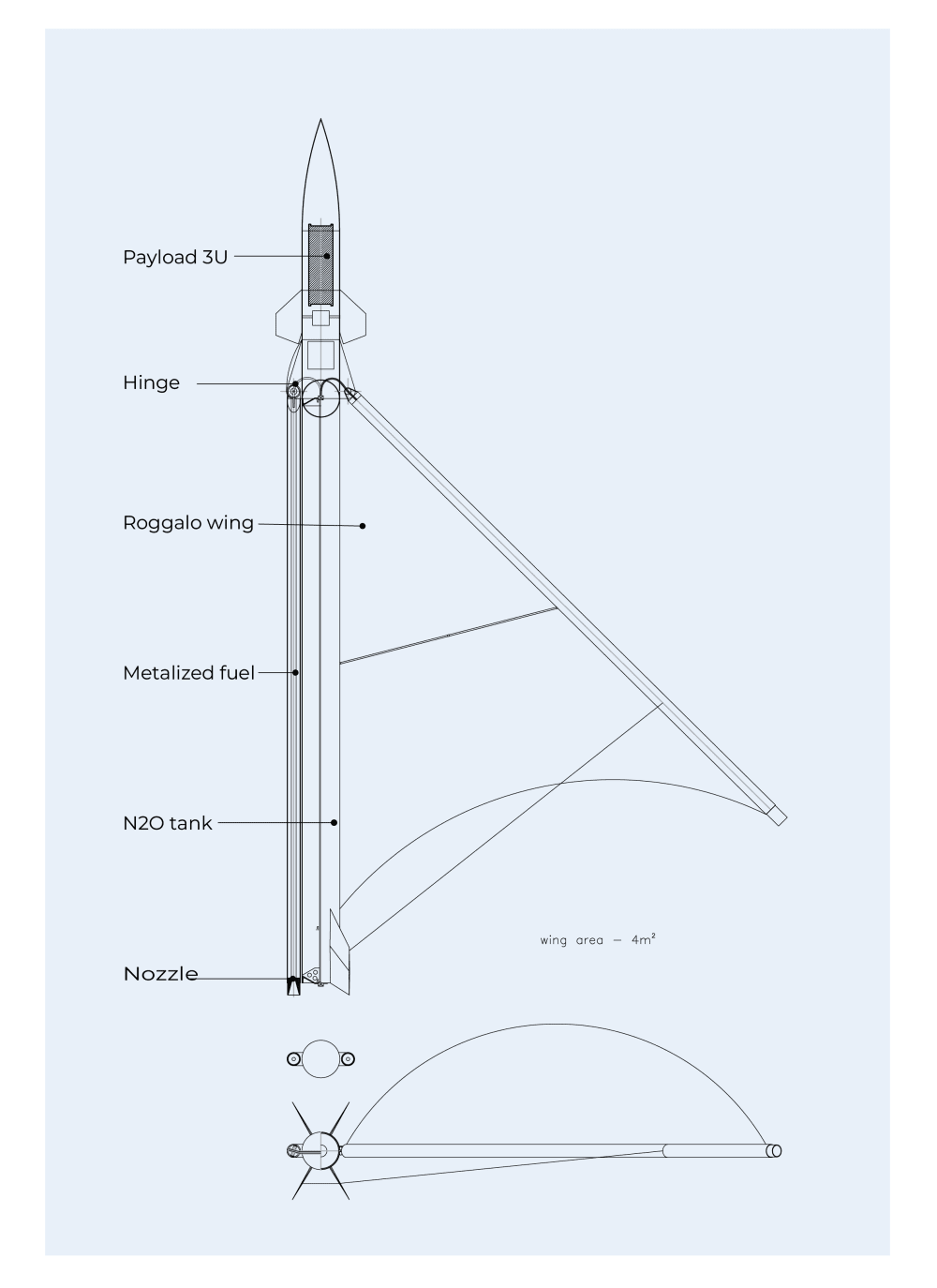What is μLauncher
μLauncher is a small reusable suborbital vehicle. It will lift a 3U CubeSat payload at 150 km altitude and return it safely to the launch pad. It will operate at modest direct and associated per-flight costs. To achieve such an ambitious goal, μLauncher will merge innovatively proven technologies and use off-the-shelf components.
Why is μLauncher
The primary application will be to test and verify space hardware in an operational environment. It will provide high-quality microgravity for science, education and training. It is an ideal platform to explore the mesosphere comprehensively - the less accessible and less explored part of the atmosphere.
Design features
μLauncher features enhanced hybrid propulsion – Nitrous oxide popular as Party gas and metallised fuel. It will glide back to the Launchpad with a retractable Roggalo wing, low-cost IMU and non-ITAR GNSS autopilot. The main structure is made of commercially available carbon fibre tubes. The payload integration is simple and fast. The payload bay is a 3U CubeSat pod.
The design philosophy is ‘First Time Right’ and includes comprehensive simulations to avoid costly and time-consuming iterations on physical prototypes.
Benefits
μLauncher suborbital vehicles provide government, defence and commercial customers, space startups and amateurs with a rocket-powered test environment – all to retire risk and advance technology readiness for space. Beyond testbed services, μLauncher will provide high-quality microgravity for science, education and training. It is an ideal platform to explore the mesosphere comprehensively - the less accessible and less explored part of the atmosphere.
The prelaunch testing of the hardware in a realistic operational environment is beyond the abilities of most startups. As a result, the failure rate of CubeSats remains alarmingly high. Even high-end test facilities cant simulate the space flight conditions 1:1.
Preliminary design specifications
Apogee - 120 -200 km depending on the payload
Specific impulse – 220 sec
Delta V - 3km/s
Start mass - 49 kg; propellant 37 kg
dry mass 7 kg;
payload 1.4 - 5 kg
Height - 3650 mm
Width - 270 mm
Central core diameter 155 mm
wingspan (opened) 3780 mm; wind area 3.34 m2
wing load 5.6 kg/
Video
Like this entry?
-
About the Entrant
- Name:Valentin Stavrev
- Type of entry:teamTeam members:
- Software used for this entry:AutoCAD, Rhino 3D, OpenRocket, RPA, Octave...
- Patent status:none








